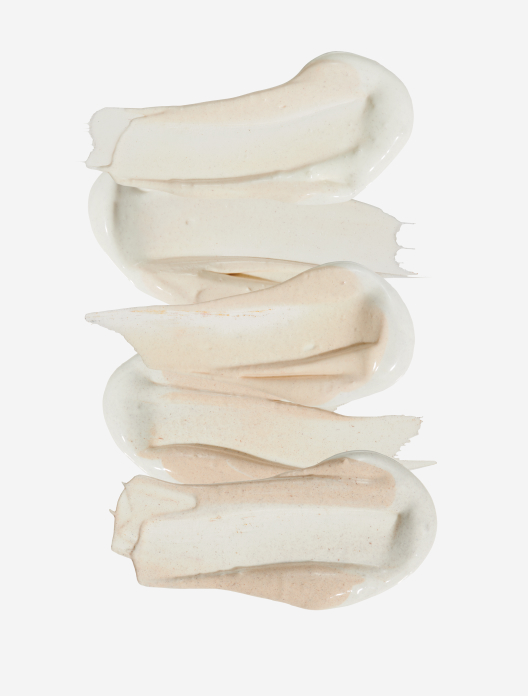


 5 shades
5 shades
BFF SPF 30 Cream
SPF 30 to protect, perfect and give skin a healthy glow
Choose shadeWe've absorbed duty costs so you can shop your staples with no extra charges

The term ‘SPF’ has become a shorthand for sun creams and sunscreens in general, and these three terms are used somewhat interchangeably – but understanding that the abbreviation SPF actually means something quite different to sunscreen is the first hurdle to jump. SPF stands for Sun Protection Factor and is a metric designed to indicate how much UVB protection you’re getting from your sunscreen.
UVB rays make up around 5% of the UV rays that reach the earth. They are relatively short and high in energy, they’re also most prominent during the summer months. UVB is the biggest cause of sunburn and skin cancer, reaching the epidermis (top layer) of the skin. On the other SPF-protected hand, UVA rays make up 95% of the UV rays that reach the earth. UVA rays are longer than UVB, allowing them to travel into the dermis where they act as the biggest cause of premature ageing.
If you want to shield your skin against UVB and UVA rays (and trust us, you really should) you’ll also need to look out for the term “broad spectrum”. This means that the sunscreen also protects against UVA rays. Currently, there isn’t one globally accepted test for measuring UVA protection, and the terminology used to indicate this isn’t consistent around the world. But, if your sunscreen mentions broad spectrum or UVA protection on the packaging, this is a good indication.
If you’re serious about sun protection, you’ll want to be using the highest factor available – but keep in mind that your application technique has an impact on how much protection you’re really getting from your sun-safe staple. SPF 15 should block around 93.3% of UVB rays, SPF 30 around 96.7% and SPF 50 around 98%, but only if you’re using it exactly as directed on the packaging. In the UK and EU, the maximum SPF you can claim is 50+, but other countries allow you to claim more.
Even if you rely on SPF 100, remember that this does not mean 100% protection, it’s simply an indication of the amount of UV protection you’re getting. Just like breakouts and reactions to skincare, everyone’s skin is different – unfortunately, some people will burn quicker than others.
So we’ve cleared up the basics – what SPF is and what the numbers stand for – but how much more do you know about this final step in your skincare routine? Let’s dive deeper…
What is the difference between chemical and mineral sunscreen?
UV filters are elements within sunscreen formulations that work to filter UV rays from your skin. There are two types of UV filters – mineral (also known as physical) and chemical, but the names are slightly misleading, as both are technically chemicals. Sunscreens can be formulated with only mineral filters, only chemical filters or a mix of both. Many use a mix of filters, as different filters are more effective at specific parts of the UV spectrum. So, for example, some might work best on UVA, and others work best on UVB.
Chemical filters absorb UV rays and convert their energy into small amounts of heat – so small that you can’t feel it. Mineral filters work in the same way, but can also reflect and scatter UV rays. There are only two mineral filters available (zinc oxide and titanium dioxide) but many more chemical filters (including octocrylene, avobenzone and oxybenzone). Chemical sunscreens tend to be more lightweight than mineral, absorb quickly and dry fast. Mineral sunscreens are generally better suited to sensitive skin as they have soothing properties, but can have a white cast, which makes them unsuitable for those with darker skin tones. Which type of filter you use is down to personal preference but ultimately, the best sunscreen is one you’ll look forward to wearing every single day.
Yes, it’s important to wear SPF every single day, even if you’re planning on staying indoors or even just dashing from your home to the office and enduring the sweaty commute. UVA rays are present all year round and can penetrate through glass and clouds (yes, you read that right).
Because you need to be applying SPF so often, it’s important to find a formula you truly look forward to applying every single morning (and reapply during a hot, sweaty day). Opting for a lightweight, intensely hydrating formula – will slip seamlessly into your existing skincare routine, and will make sure SPF application never feels like a chore again.
Contrary to popular belief, sometimes more really is more. Apply a generous amount of SPF in the morning (roughly ¼ teaspoon for your face, ½ teaspoon for each arm and 1 teaspoon per leg, front torso and back torso) and make sure you’re topping up regularly – especially if you have been swimming or sweating.
We don’t want you to feel like this is a lecture, but yes, you really do need to be reapplying your SPF throughout the day.
If you’re lucky enough to be in a hot, sunny climate, make sure to reapply every two hours to have maximum protection. And remember, if you’re taking a slapdash approach by applying too little, or chancing a once-a-day application, then you’ll be getting far less than the protection listed on the packaging. Stay safe out there!
Shop the article



 5 shades
5 shades
SPF 30 to protect, perfect and give skin a healthy glow
Choose shadeRead, watch and be inspired...